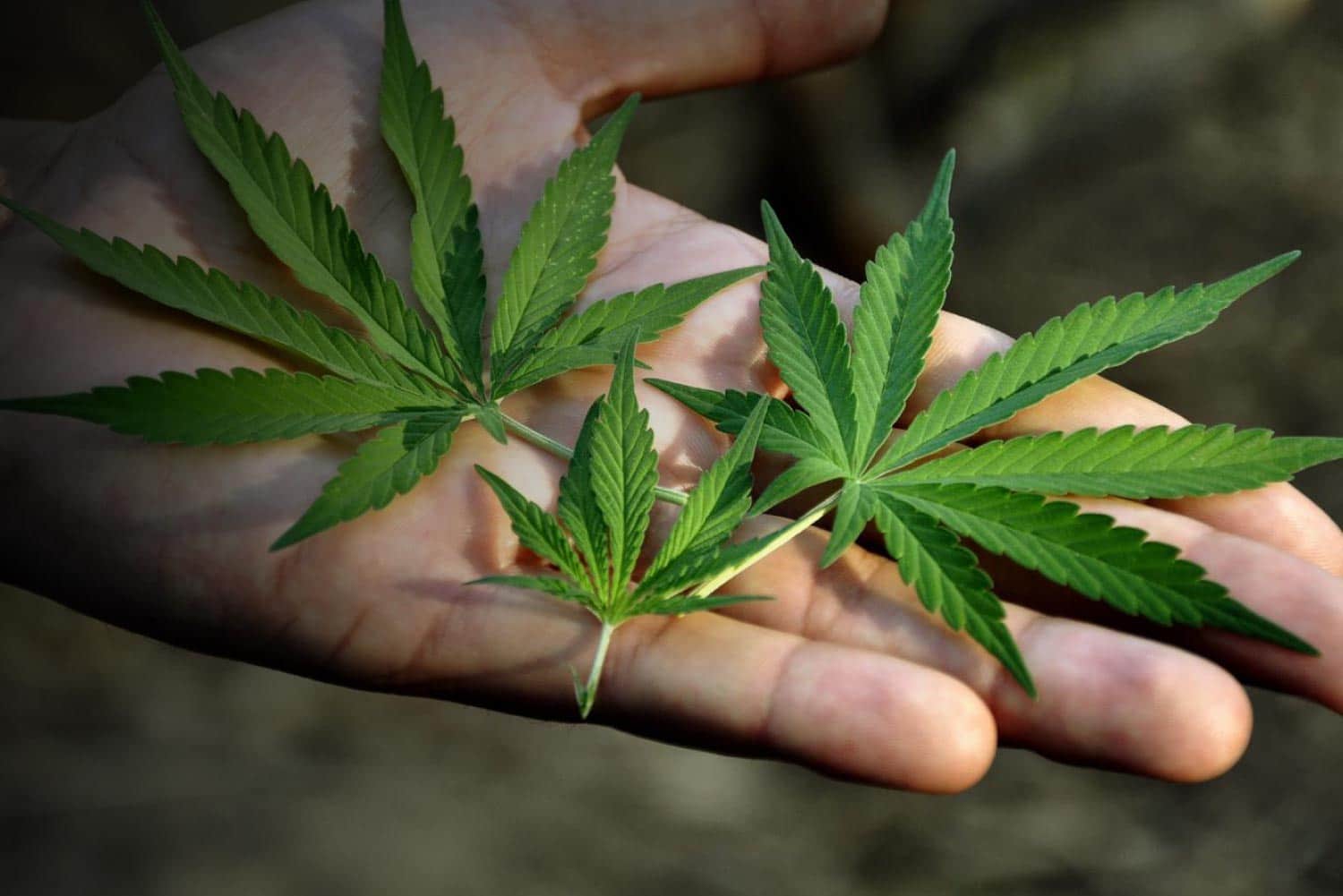
Everything you need to know about THC
Delta-9 Tetrahydrocannabinol, more commonly known THC, is one of over 60 cannabinoids found in the cannabis plant. THC is a cannabinoid that produces the “high” or intoxicating effect that most people associate with using cannabis. It is a psychoactive cannabinoid and can produce mind-altering effects in the consumer.
The average cannabis strain is believed to have contained an average of less than 10% THC during the 1980s, whereas modern strains demonstrate an average THC percentage of 15%, with some strains testing as high as 30%. Cannabis has certainly evolved as people have continued to discover the science and chemical make-up of cannabis. Strains can be bred to have certain levels of cannabinoids, such as THC (and CBD) in order to achieve the desired effects.
Many individuals feel that THC is used for strictly recreational purposes to get the user “high”, but this is a myth. THC has numerous health-related benefits including the ability to reduce pain, decrease stress, increase appetite and aid in sleep.
How THC Works In the Body
THC acts on the body’s endocannabinoid system, specifically in designated centers of the brain which are believed to be the hippocampus, cerebellum cerebral cortex, nucleus accumbens, and basal ganglia, to name a few.
THC mimics a chemical called anandamide, which is a naturally occurring cannabinoid compound produced by the human brain. Anandamide is responsible for normal function and communication in the brain. The brain sends signals, via neurons, by using a variety of neurotransmitters. THC acts on these neurons to alter the messages being received by the brain, and in turn alters the chemical communication in the brain.
According to the National Institute on Drug Abuse (NIDA), “THC affects things like thinking, memory, pleasure, movements, concentration, coordination and sensory and time perception”. This is due to the fact that high concentrations of cannabinoid receptors are found in the brain centers that control these functions.
In essence, THC is responsible for altering normal brain signals and processes, which lead to the consumer feeling “high”. When THC is consumed it increases the number of cannabinoids in the endocannabinoid system and can alter communications between neurons. Natural cannabinoids are no longer able to fine-tune communication between neurons or control motor function, which is what is believed to make the consumer feel “high.”
How Can THC Be Consumed?
There are various methods to consume the compound THC, found in medical and recreational cannabis.
One method of consumption is smoking, however, we never recommend a patient smokes their medical cannabis, as it is harmful to the body.
Vaporizing THC is another popular method of consumption as it does not involve burning plant material and creating unwanted by-products. Vaporizing involves heating plant material, oil, wax or other solid THC materials to the point where THC is released, without burning. The release of THC creates a vapor, or fine mist, which is then inhaled by the patient. When THC is vaporized it enters the bloodstream immediately and makes its way to endocannabinoid receptors in the brain within minutes. This method is ideal for patients who need immediate relief from their symptoms.
THC also comes in other forms such as capsules, oils, edibles, and tinctures. When THC is ingested orally the onset of effects is slower and may take 1-2 hours to occur. These ingestion methods are popular because there is no smell, and products can be taken on the go for easy consumption. Oils and capsules are very popular with patients who need long-lasting relief of symptoms, in a convenient and discreet method.
Benefits of THC
Pain Relief
Chronic pain is quickly becoming a leading cause of disability worldwide, with 1.5 billion people reporting that they suffer from daily chronic pain. While further research is needed, current studies demonstrate the effectiveness of THC as a treatment for pain. Some findings show that THC can activate pathways in the central nervous system which in turn block pain signals from being sent to the brain. Therefore, sensations of pain are significantly reduced.
Neuroprotective Properties
THC is also considered a neuroprotectant, meaning that it protects brain cells from damage and degenerative diseases such as Alzheimer’s. A 2014 study found that “people with THC in their systems were 80% less likely to die from traumatic head injuries than those without THC”. Furthermore, a patent is held on cannabinoids as neuroprotectants and antioxidants.
A 2018 study concluded that “the inherent polypharmaceutical properties of cannabis botanicals offer distinct advantages over the current single-target pharmaceutical model and portend to revolutionize neurological treatment into a new reality of effective interventional and even preventative treatment”. In simple terms, medical cannabis has the potential to revolutionize the treatment of diseases such as Parkinson’s and Multiple Sclerosis due to its neuroprotectant effects.
Post-Traumatic Stress Disorder
PTSD is often a debilitating psychological disorder and can include symptoms such as severe anxiety, insomnia, agitation, depression, nightmares, and social isolation. A 2014 study researched the effects of THC as an add-on treatment for people suffering from PTSD. Results showed that orally absorbable THC was a safe treatment for PTSD and offered patients relief from the symptoms of PTSD. Apollo is currently studying the effects of medical cannabis on PTSD.
Inflammation
Inflammation can be acute or chronic and is a major risk factor for other diseases. Depression and arthritis both have inflammatory components that may be reduced by the use of THC. One study suggests that THC may reduce the production of cytokine and chemokine compounds in the body, both of which contribute to chronic inflammation.
Antibacterial Properties
THC is produced by cannabis plants to protect them from pathogens, and many researchers feel that it could have the same effects in human and animal subjects.
One study, completed on mice, treated a group of obese mice with THC and found that over time their gut microbes changed and mimicked the gut microbes of lean mice.
Furthermore, researchers at MIT discovered that THC was an effective treatment against Methicillin-resistant Staphylococcus aureus (MRSA), which was untreatable with traditional antibiotics.
Antioxidant Properties
THC is a powerful antioxidant and has been touted as an anti-stress and anti-aging tool when used topically. The cannabis plant is believed to produce THC to protect itself from UVB light. UVB light is also the spectrum of light that causes oxidative stress in humans and contributes to the aging process, and the appearance of wrinkles and other skin diseases such as skin cancer. Therefore, THC is thought to reduce the signs of aging and oxidative stress in the human body.
What does the THC Percentage mean?
As of legalization on October 17, 2018, all legally sold cannabis products are required to be labeled with amounts of THC, CBD. This has always been a legal requirement for medically produced cannabis, bought directly by patients from Licensed Producers. The percentage of THC listed on the packaging is generally a total THC count which takes into account the decarboxylation of THCA into THC and the difference in weight of the two compounds. Therefore, if a product states that it contains 18% THC, this is generally the amount of THC that is available for consumption (ie. 18% of the plant material is THC which is available for consumption).
THC vs. CBD
Many individuals have heard about the wondrous effects of CBD or CBD oil, but are confused about its relation to THC. THC and CBD are both cannabinoids found in the cannabis plant, however, CBD and THC tend to have counterbalancing effects, with one believed to reduce the effects of the other.
For instance, if you consume too much THC and are not enjoying its effects or the associated “high”, CBD is thought to reduce the unwanted effects, such as anxiety or paranoia, and return you to a less intoxicated state.
It is important to remember that THC and CBD act similarly within the endocannabinoid system, however, THC is an intoxicant and CBD is not. Both cannabinoids are reported to reduce inflammation and pain, decrease stress, elevate mood and improve sleep, among other things.
How to Dose THC
Many first-time recreational cannabis users have a negative experience due to consuming high doses of THC. For these individuals, a second attempt at consuming cannabis can be a scary endeavour. We understand this and will give you proper dosing advice based on your needs and level of comfortability with using products that may contain THC.
The best way to delve into THC use is the “start slow” and “go slow” method. Begin with a small dose, wait for the effects to take hold, and go from there. It is easier to add doses of THC to achieve the desired effect as opposed to taking a high dose to begin with.
Many medical cannabis users chose to “micro-dose” THC rather than consume it in large quantities. Micro-dosing allows the user to achieve medical benefits without producing whole body effects and involves consuming THC in very small doses. Again, Apollo will ensure your personalized treatment plan with medical cannabis uses the ‘start low’ and ‘go slow’ approach.
Explore THC with Apollo
THC is one of over dozens of cannabinoids found in the cannabis plant. THC is the psychoactive compound that produces the traditional “high” associated with cannabis, however, it has numerous health benefits and medical applications, and is not to be discounted as a medically beneficial compound.
Apollo Cannabis Clinic is an evidence-based medical cannabis clinic available to assist patients in finding the products that will be most beneficial to their individual needs. Apollo Cannabis Clinic doctors are available for consultation and our team of licensed health care providers will help patients every step of the way. Contact Apollo Cannabis Clinic today to see how THC and medical cannabis may be of benefit to you.

